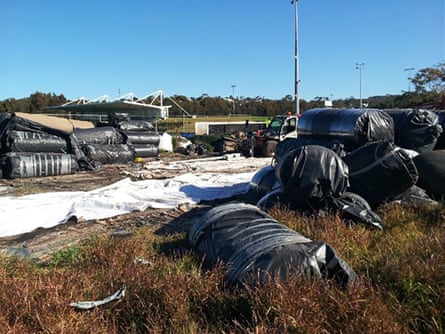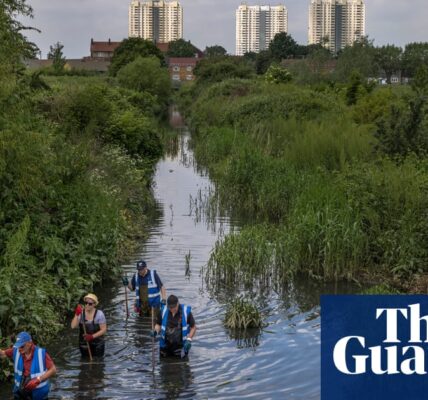Is the installation of artificial turf on Australian sports fields worth the potential impact on the environment?
T
In 2019, the Northern Beaches council installed new synthetic turf on a council oval, replacing natural grass with a type of artificial turf commonly referred to as astroturf. The council had specified in their contract that the old turf be recycled rather than disposed of in a landfill. However, a new federal law passed in 2020 made it more challenging to ship plastic waste to foreign recycling facilities.
A permit was not granted, so the rolls of old turf sat for nearly 18 months until they were removed earlier this year. They are now in a container in a railway siding, awaiting the completion of a recycling plant capable of separating the various components that make up the product.

The question of how to handle used synthetic turf, coupled with rising worries about microplastics and the potential for severe weather occurrences, creates a complicated discussion about its usage in Australia. The Alliance for Natural Turf, consisting of 16 community organizations focused on the impact of artificial turf, has requested a 5-year pause from the NSW government on implementing the product.
It has been advised that NSW should follow the precautionary approach, as there is limited understanding of the potential long-term effects of microplastics and chemicals it may release. These chemicals include perfluoroalkyl and polyfluoroalkyl substances (PFAS), which are commonly referred to as “forever chemicals”.
Unknown impacts
In June of this year, the NSW government published a report by the chief scientist, Hugh Durrant-Whyte, which acknowledged the environmental consequences of artificial turf. However, the report did not suggest prohibiting its use. According to the report, there are currently 181 artificial turf playing fields in NSW, a significant increase from 24 in 2014.
The primary issue was the possibility of plastic pollution. Many artificial sports fields in NSW use long synthetic blades that are filled with styrene butadiene rubber (SBR) crumbs, which are made from recycled tires.
The SBR crumb is the primary concern for communities worried about contamination. However, the chief scientist notes a lack of information and standards regarding the synthetic turf’s materials and chemical makeup.
According to the report, the expert recommendation for the assessment is that a synthetic turf field lacking preventative measures for infill loss could result in the erosion of tens to hundreds of kilograms of infill annually, which would then enter stormwater systems or waterways.
-
Join Guardian Australia’s free email newsletters for a daily summary of news, sent out in the morning and afternoon.
It is estimated that hundreds of kilograms of turf fibres are lost each year from a synthetic turf field, and this amount may increase for fields that are reaching the end of their lifespan or are not properly maintained.
Reworded: Lively children in urban areas
The main reason for the growing use of artificial turf is the high population density and the rising need for recreational facilities.
Sue Heins, the mayor of the Northern Beaches, states that all councils in Sydney are experiencing a rise in demand for additional sports fields due to an increasing number of people participating in sports.
The Northern Beaches council oversees 127 sports fields, including six synthetic ones that offer nearly twice the playing time compared to natural grass.
Hein states that these recently developed surfaces are stronger and do not need to be replaced or treated for weeds like natural grass does. Additionally, they can be used in wet conditions, allowing for increased amount of time for playing.
Our company has implemented strategies to avoid any negative effects on the environment caused by synthetic surfaces. These include opting for cork infill rather than rubber and properly recycling old synthetic turfs when they reach the end of their usable life.

However, while artificial turf provides longer-lasting surfaces, there are worries about its contribution to the heat island effect in urban areas. Unlike natural grass, which remains cool under the sun, artificial grass heats up rapidly due to its higher absorption of solar radiation.
According to Sebastian Pfautsch, an associate professor at Western Sydney University, this substance can lead to serious burns, similar to how polished metal surfaces can.
Avoid the newsletter advertisement.
after newsletter promotion
According to his study, fake grass used in playgrounds can reach temperatures above 80 degrees Celsius, even if the outside temperature is below 30 degrees Celsius. At times, sprinkler systems are necessary to lower the temperature, which contradicts the water conservation benefits of using artificial turf.
A representative from the local government of Inner West Sydney, which has four artificial fields, states that they utilize an organic filling to mitigate heat during hot temperatures. They are also working on increasing the number of trees planted to combat the heat island effect.
Recycling synthetic turf
Following the restrictions on exporting plastic waste, Australian artificial grass manufacturer Tuff Turf has partnered with Sustainability Victoria to build a recycling plant at Barnawartha, near the Victoria-NSW border.
Re4orm, a new project, is set to launch in the beginning of next year. Its director, Trent Cummings, has stated that approximately 2 million square meters of synthetic turf from Sydney’s sports fields will be replaced within the next six to eight years.
Cummings states that the specially designed facility will divide the turf into separate parts, resulting in less waste being sent to landfills and a significant decrease in the amount of C02 emissions released.
The initial step is to divide the sand, crumb (typically made of rubber), and “gunk” from the plastic mat. The sand and rubber are then cleansed for future use.

The grass blades are removed from the mat and the plastic grass is melted into polyurethane pellets and stabilizer. These materials can then be used to create products like landscaping boards and seats.
According to Cummings, Re4orm’s service is compatible with all types of artificial turf. The backing, which accounts for approximately 3-4% of the product’s weight, is more intricate, but will also be repurposed into latex and other plastic materials.
Cummings suggests that the government should conduct further research in order to develop products made from recycled materials.
According to him, the majority of shockpads found beneath turf are currently imported. However, there is no obstacle preventing us from producing them locally using recycled materials.
The previous man-made grass on the Northern Beaches will be among the initial synthetic surfaces to undergo Re4orm’s procedure. However, in the interim, councils can expect more inquiries from their communities regarding the environmental impact of the product.
Source: theguardian.com

